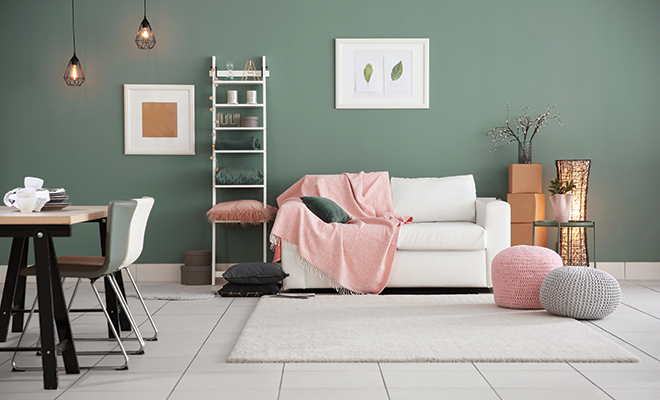
Harmony in the Home with Color
Creating a specific mood in your home begins with the colors you choose and how you combine them. If you want a deeper understanding of how to select and mix colors to create different effects, the The Complete Color Harmony: Pantone® Edition is a great place to start.
This best-selling reference from Rockport Publishing has been a trusted reference for artists and designers for more than two decades. The latest installment is a special edition penned by Lee Eiseman, an internationally recognized color specialist and executive director of the Pantone Color Institute.
What is color harmony? Eiseman describes it as the combination of colors to create a mood or ambiance. Professional designers use color harmony to forge an emotional connection with the human mind. To do this, they need to understand how we perceive and relate to color. The early sections of the book provide insight into how the mind processes color and a brief history of the scientific history of color theory, including Sir Isaac Newton’s invention of an early color wheel. The color wheel itself, which sorts primary, secondary and tertiary colors, is also discussed.
The book turns next to the psychology of color, a fascinating topic that Eiseman covers in depth. We all have reactions and feelings associated with different colors, with roots that may be biological, cultural or personal. For example, yellow is associated with the warmth of the sun and is often described as a joyful color. But if you have a bad memory related to the color, such as sustaining an injury while riding your yellow bike as a child, then you may have a different emotional reaction. Eiseman dissects the color wheel and discusses the psychology of each major color in a separate section, illustrated with gorgeous images that are a Pantone trademark. The well-written text and striking photographs make this a book that anyone who loves color will enjoy.
Since the intended audience is design professionals, each color section includes details about the color’s popularity and cultural role over the past few decades. We learn that brown was associated with organic food and natural lifestyles in the 1960s and 1970s, but became more of a luxury statement in the 2000s (think brown diamonds), and that the color beige was first popularized by
French fashion designer Coco Chanel in the 1920s after she used WWI surplus fabric for high-end clothing.
After discussing the psychology of individual colors, Eiseman examines color and mood in depth with a series of 30 color palettes that convey specific moods. First she states an informal rule for putting colors together: a dominant color will reinforce the desired mood. Whether you’re combining two colors or three or more, including a dominant color is critical.
The mood-based color palettes are similar to the palettes Pantone chooses each year as trending color combinations for design and branding. Each of the 30 palettes is accompanied by 36 suggested “harmonies” consisting of different combinations of 3 colors each. Each harmony is presented as a circle, with the size of each color wedge in the circle showing the proportion of each
Pantone-numbered color to use. Altogether, there are thousands of suggestions for adding color harmony to your home with professional results.
Here’s a taste of the expressive palettes. Delectable is inspired by the retro sweets of childhood: pastel Necco wafers, pistachio sherbet, pink cotton candy. Urban is a palette that conveys the metro ambiance of steel skyscrapers, cool concrete and glass reflecting the blue sky overhead. The Botanical palette, inspired by the deep connection we have with the greenery around us, contains the largest range of hues of any palette, from sea foam and lime to deep forest green. The Soothing palette is as calming as it sounds, including cooler shades of blue, green, gray and pink. Surface textures can also affect mood, as seen in the Glamorous palette’s lustrous surfaces and metallic finishes overlaid on sultry reds, sensual purples and hot fuchsias and pinks, complemented by turquoise.
The final section of The Complete Color Harmony talks about our personal color likes and dislikes. The colors we gravitate toward reflect our personality at given times in our lives. They may also say something about our secret dreams and desires, such as an affinity for the color red expressing a desire for more passion in your life. Our color preferences may change over time, including our favorite color.
Eiseman even suggests that choosing new favorite colors following major life changes is a good way to reinvent your life. She’s not suggesting that you throw away all your clothing or furniture and start over, but says, “If you are reinventing your life, maybe it’s also the best time to reinvent your colors.” This book provides plenty of inspiration for color reinvention. ■







